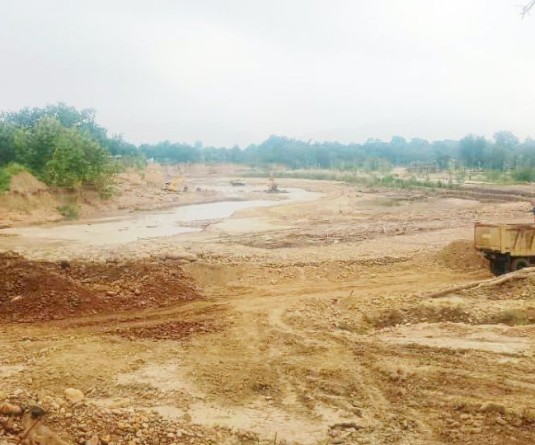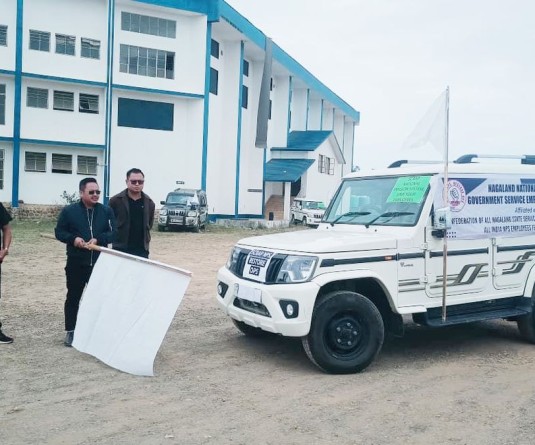Sanjoy Hazarika, Journalist & Founder of Centre for North East Studies & Policy Research (3rd from L) and Vipralhou Kesiezie, Chairman, Governing Body, Baptist College (2nd from L) seen with other speakers and paper presenters during the inaugural session of the two-day national seminar at Baptist College Kohima on June 11.
Morung Express News
Kohima | June 11
“While the (Naga) political talks continue and people wait, with or without hope, with growing fatigue, for resolution of Naga political issues, if not another agreement, we should also remember that there are examples from the Naga hills which go back decades and which are truly inspiring examples of how communities and people have addressed critical issues of confrontation and violence, anger and despair, hatred and division.”
Sanjoy Hazarika, Journalist, Author, Academic, Policy Expert & Founder of Centre for North East Studies & Policy Research remarked during the inaugural session of the two-day national seminar on “Border Dynamics in Northeast India: Challenges, Opportunities and Policy Imperatives” that began at Baptist College, Kohima on June 11.
He was delivering the keynote address wherein he underscored that, “as much as political solutions are critical, they can be sustained by healing and restoration at different levels” which, he emphasised needs to be recognised. Today, he observed that “a larger process is at work seeking to end the decades of violence, silencing and conflict.”
Whenever he returns to Nagaland, he said he sees “changes for the better on the surface anyway.” “Fratricidal killings have virtually ended. New startups and popups and cafes are visible, Naga fabrics, handlooms and food are making a mark everywhere. There is energy and bustle despite broken roads. Yet some of the old suspicions and concerns remain as do the divisions. There are agreements but no conclusions or resolutions. Why? Perhaps it is because as many have said before me of the lack of unity,” he maintained.
He further pointed out that the focus of younger people appears to be four-fold namely 147 backdoor appointments, IBI illegal Bangladeshi Immigrant, ILP being extended to Dimapur and the Indo-Naga talks, which, he added, has “receded to the background except when there are statements and visitors by government officials etc.”
As an observer, he said that the most obvious thing is that the Government of India would prefer an accord with one united group not with several groups. In this regard, he asserted that “it is the responsibility of the public to urge this unity which may precede reconciliation.”
“It is not for me to suggest one way or the other, but simply point out that all stakeholders need to be consulted in an equitable and transparent manner,” he expressed.
Stating that it is the same process that one would advocate with the FMR and the border fence, he expressed, “Keep the consultations going, keep the dialogue open with all stakeholders so that all sides understand the priorities of the other and perceptions.”
He further underlined that “the government also needs to make its red lines known clearly because concerns about security, internal and external, are understandable as are the issues that are hurting people between the borders – substance abuse, leading to loss of livelihoods and divided families and a disrupted society.”
Asserting that “it is not what happens on the border that counts,” he also pointed out that, “it is what is happening with the homes and offices of the lives before and between border for Nations are works in progress.”
He underscored that the talk about trade etc. “will not take off unless we have good relations with our neighbours and good infrastructure to and across them.” “We cannot benefit from international trade,” he maintained while emphasising that stability in the neighborhood matters.
When border dynamics are discussed, he stated that, “we need also to look at communities between borders and along borders” and further took the audience on a journey in Mizoram to the Indo-Myanmar border and beyond while looking at issues of infrastructure, trade and people in Mizoram which has largely seen peace for nearly 40 years. He also deliberated on a few key issues in his home state of Assam that have given rise to external approaches and policies and the history of border fencing.


.jpg)



